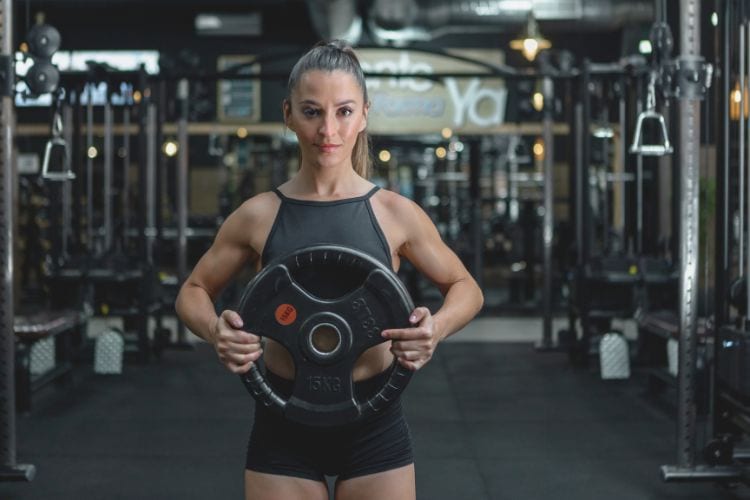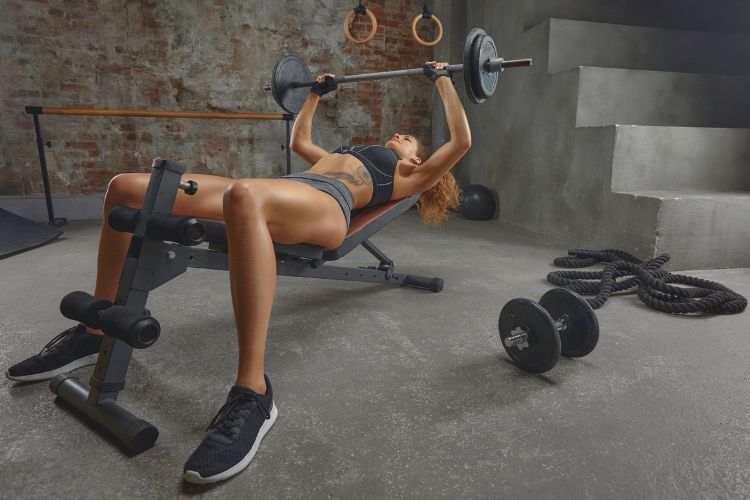Sign up for workout ideas, training advice, reviews of the latest gear and more.






Looking for an efficient and powerful way to train your entire body in just over half an hour? A 35-minute full-body compound dumbbell workout is the ultimate solution. These exercises use multiple muscle groups, burn fat, build muscle, and improve cardiovascular endurance—all with just a pair of dumbbells.
This post will guide you through the benefits of compound dumbbell training, key movements to include, a structured 35-minute routine, and tips to maximize results. Whether you’re training at home or in the gym, this is your blueprint for a full-body transformation.
Compound exercises target multiple joints and muscle groups at once, making them time-efficient and highly effective. When performed with dumbbells, these movements also enhance stability, coordination, and unilateral strength.
A great workout includes push, pull, hinge, squat, and core elements. You’ll want to combine upper and lower body movements for metabolic intensity while balancing muscle groups for joint health.
Choose a weight that challenges you but allows good form for at least 8–12 reps. For this 35-minute plan, select dumbbells you can use for both strength and endurance sets.
Spend 5 minutes preparing your joints and muscles with dynamic movements to prevent injury and improve performance.
After the warm-up, your heart rate should be elevated, and your joints should feel loose and ready to move.
This routine is structured into three main circuits. Each circuit contains compound exercises and finishes with a core or cardio move. Perform each move for 40 seconds, followed by 20 seconds rest. Complete 3 rounds of each circuit before moving to the next. Rest for 60 seconds between circuits.
Hold a dumbbell close to your chest and squat down until thighs are parallel to the floor. Push through your heels to stand.
Hold two dumbbells in front of your thighs, hinge at the hips with a straight back, and lower the dumbbells to mid-shin before returning upright.
Perform a front squat and explode upward into an overhead press.
Sit on the floor, lean back slightly, and twist with a dumbbell side-to-side to engage obliques.
Repeat Circuit 1: 3 Rounds
Rest: 1 minute before Circuit 2
Lie down and press two dumbbells from chest to ceiling. Focus on controlled reps.
With knees slightly bent, hinge forward and row dumbbells toward your ribcage.
Start with dumbbells in front of your face (palms in) and rotate as you press overhead.
Start in a high plank, and drag a dumbbell from side to side under your torso using alternate hands.
Repeat Circuit 2: 3 Rounds
Rest: 1 minute before Circuit 3
Step back into a lunge, then return to standing and curl both dumbbells.
Explosively pull dumbbells from knees to shoulders and press overhead in one fluid motion.
Perform a squat, then pull dumbbells vertically to chest height.
Drop into a squat, kick feet back, return to squat, and press dumbbells overhead.
Repeat Circuit 3: 3 Rounds
Cool down after completion
Use static stretches and deep breathing to relax muscles and enhance flexibility. Hold each stretch for 30–60 seconds.
You can repeat this compound dumbbell workout 3–4 times a week with rest or lighter activity days in between. Here’s a sample schedule:
| Day | Activity |
|---|---|
| Monday | 35-Min Full-Body Compound Dumbbell Workout |
| Tuesday | Light cardio or yoga |
| Wednesday | 35-Min Full-Body Compound Dumbbell Workout |
| Thursday | Active recovery (walk, stretching) |
| Friday | 35-Min Full-Body Compound Dumbbell Workout |
| Saturday | Optional: Core & Mobility Work |
| Sunday | Rest |
Don’t rush through reps. Use controlled movements and proper mechanics to avoid injury and maximize muscle activation.
Every week, try to increase your weight slightly or perform more reps within each interval to keep progressing.
Don’t burn out early. Pace yourself so you can maintain consistent effort through all 3 circuits.
Exhale during exertion (like the press or lift), and inhale during the lowering phase to maintain oxygen flow and performance.
Beginners can reduce the weight or interval length (e.g., 30 seconds on, 30 seconds rest). More advanced lifters can increase weights or reduce rest.
Yes! As long as you use proper resistance, apply progressive overload, and train consistently, dumbbells can stimulate hypertrophy and strength.
Choose a weight that allows 8–12 reps per set with good form. You should feel fatigued by the end of each interval.
Absolutely. Beginners can scale by using lighter dumbbells, modifying complex movements, or doing fewer rounds per circuit.
Yes. A warm-up increases blood flow, loosens joints, and helps prevent injury during weight training.
This 35-minute full-body compound dumbbell workout is ideal for people looking to maximize results in minimal time. It blends strength, endurance, and core stability into one powerful session. With consistency and progressive effort, you’ll build muscle, burn fat, and develop a fitter, more athletic physique.
All you need is a pair of dumbbells and the will to push yourself.
Want more workout and video guide?
Follow us on Pinterest, Facebook, and Subscribe to our Newsletter and Stay tuned for FREE downloads of our App coming soon!
Stay up to date on the latest women’s health, fitness and lifestyle trends and tips.